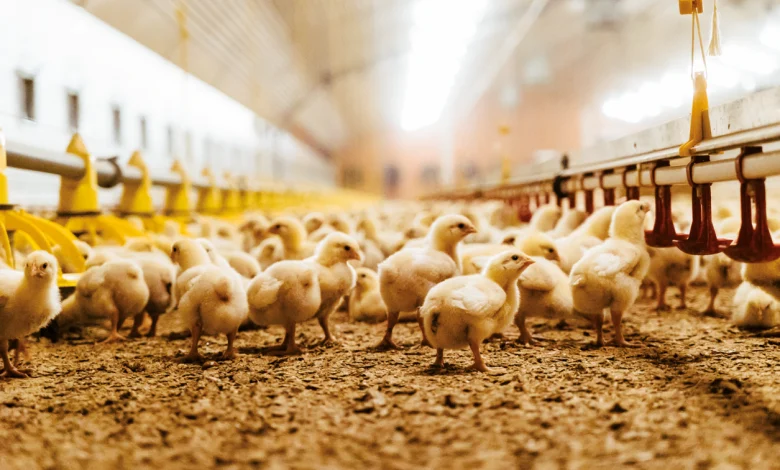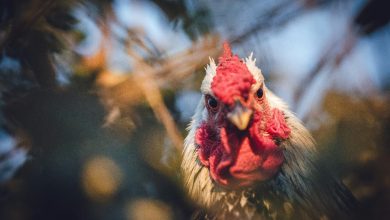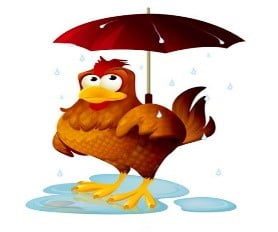Poultry Production in the Era of Climate Change

Poultry Production in the Era of Climate Change
Nilay Deshpande – ICAR-Central Avian Research Institute, Izatnagar
Lokesh Buddhe – ICAR-Central Avian Research Institute, Izatnagar
Introduction:
The fastest-growing sector of Indian agriculture has been the poultry industry, with production of eggs and broilers increasing by 8 to 10% annually despite recent rumors relating poultry to the country. The industry has demonstrated resiliency and is still expanding despite the COVID-19 virus and the avian influenza pandemic. India has the third-largest economy in the world according to the Economic Survey 2021–2022. world’s eighth-largest producer of meat and eggs. Over the past 40 years, the Indian chicken industry has experienced a paradigm shift in its structure and operations, evolving from a small household hobby to a major commercial agro-based sector.
India has experienced remarkable growth rates in the production of eggs (4 to 6% annually) and broilers (8 to 10% annually) due to the development of high-yielding layers (310 to 340 eggs) and broilers (2.4 to 2.6 kg at six weeks) varieties, as well as a standardized package of practices on nutrition, housing, management, and disease control. According to the 20th Livestock Census report, there were 851.81 million chickens in the nation in 2019, representing a 16.8% rise in total chickens. 317.07 million birds are kept as backyard poultry nationwide, an increase of around 46% from the last census. 534.74 million commercial poultry were raised in the nation in 2019 compared to the previous census, a 4.5% increase.
- CLIMATE CHANGE:
These climatic parameters include temperature, humidity, solar radiation, precipitation and the temperature of water which causes glaciers to melt. The Inter-Governmental Panel on Climate Change’s Fifth Assessment Report shed light on a future temperature increase in the Earth’s surface ranging from 0.3 to 4.8 °C by 2100 (IPCC, 2013); by affecting livestock through variations in feed crops and forage, biodiversity, animal welfare, productive and reproductive traits. In the world, climate change is driving tool for temperature rises, altered photoperiods and reductions in precipitation causing reduced feed quality and quantity (Angel et al., 2018). One problem the livestock industry will have to deal with in the upcoming years is climate change. The greatest environmental stressor for poultry farming globally is, above all, HS. According to statistics from 2003 research, the annual economic loss in the US cattle industry as a result of HS ranged from $1.69 to $2.36 billion; of this amount, the poultry business accounted for $128 to $165 million (Lara et al., 2013).
What is happening to the global temperature?
The planet is becoming warmer and the climate is changing. The direct solar radiations (enormous amount of heat/energy) striking on earth’s surface is trapped by Green House Gases (GHGs) like carbon dioxide (CO), methane (CH), nitrous 2, 4 oxide (NO), hydrofluorocarbons 2 (HFCs) etc., resulting in atmospheric temperature increase. The principal cause of global warming effect through CO levels reached peak concentrations of 410 ppm at present.
Climate change adversely affects the food security in all countries through agriculture production. It affects food security in four dimensions, food availability, food accessibility, food utilization and food system stability. It also has impact on human health, livelihood assets and food production and distribution channels.
Climate has effects on the yield and quality on crop production for husbandry where feed ingredients are sourced such as maize, groundnut cake, cotton-seed cake, wheat offal and rice bran are gotten from agronomic activities.
- IMPACT OF CLIMATE CHANGE ON POULTRY PRODUCTION:
Poultry exhibit a high degree of sensitivity to temperature-related challenges, particularly heat stress, which triggers endocrine alterations leading to increased lipid storage, diminished fat breakdown, and accelerated breakdown of amino acids. For egg-laying hens, the impact of heat stress manifests as a decrease in feed consumption (Deng et al., 2012), resulting in lower body mass, egg output, and meat quality, as well as a reduction in eggshell thickness and a rise in egg breakage (Lin et al., 2004). Additionally, heat stress detrimentally influences the robustness, mass, mineral content, and density of eggshells (Miller et al., 1975). In the context of smallholder and subsistence agriculture in developing nations, particularly in Africa, there is an anticipation of intricate and specific repercussions stemming from climate change and limited adaptive capabilities. While commercial farming operations that maintain tightly regulated environmental microclimates may not regard local climate or climate shifts as a major issue, it is probable that in the rural sectors of developing countries, free-range poultry is negatively impacted (i.e., stressed) by harsh environmental conditions, given their ongoing interaction with the natural environment during foraging, and the farmers’ restricted ability to manage their habitats.
DIRECT AND INDIRECT IMPACTS ON POULTRY PRODUCTION:
Climate change exerts pressure on poultry production by causing stress in birds that maintain internal equilibrium, due to severe weather conditions such as high temperatures, flooding, drought, and lack of water. The rise in global temperatures is a significant contributor to these climatic alterations.
Severe climatic events result in significant production declines in poultry, including stunted growth, decreased egg production per hen per day, and heightened rates of sickness and death. Hot climates are associated with increased death rates among broiler chickens and weakened immune systems. Attempts to boost feed intake during heat stress through force-feeding have proven to reduce survival rates. It has been documented that mortality rates in broilers can reach up to 10% of the entire production during periods of heat stress (Lara et al., 2013).
Alterations in humidity, in conjunction with elevated environmental temperatures, adversely affect poultry. In warmer conditions, birds consume less feed to minimize the generation of metabolic heat. Consequently, nutrients that could be used for muscle growth are instead diverted to mechanisms that dissipate heat.
Elevated temperatures in the environment can diminish the fertility of eggs, their hatchability, and the quality of chicks in breeding populations (Ayo et al., 2011). Climate change impacts the production and release of reproductive hormones such as FSH, LH, progesterone, estrogen, and testosterone, leading to a decrease in the effectiveness of gamete production. This results in males producing semen with lower sperm concentration and quality, and in females, it affects egg production. Additionally, the immune response of the birds is compromised in conditions of heat stress (Calefi et al., 2019).
Infestations of pests and diseases are projected to impact the productivity of poultry, leading to increased illness and death rates, as well as higher expenses for vaccinations and treatments in various climate change scenarios. This will influence the demand for antibiotics in commercial broiler breeds that are not as robust against local environmental conditions.
Rising temperatures adversely influence the performance of egg-laying chickens by diminishing both the quantity and size of the eggs laid. The internal and external qualities of the eggs are also affected by the varying climatic conditions surrounding the birds.
In broiler chickens, productivity is compromised by heat stress, which leads to reduced feed intake, increased consumption of water, elevated body temperature, and higher rates of respiration and heartbeat. There are also disturbances in electrolyte balance, alterations in blood components, hormone fluctuations, changes in enzyme activities, and shifts in blood pH towards respiratory alkalosis (Lara et al., 2013). Furthermore, heat stress weakens the immune system in broilers, making them more vulnerable to infections such as coccidia, which can cause necrotic enteritis (Calefi et al., 2019).
Conclusion
Despite impressive growth, India’s poultry industry faces a rising challenge: climate change. Increasing temperatures and extreme weather events like heat waves and droughts can severely stress birds. This translates to lower egg production, reduced meat quality, and higher mortality rates. Free-range birds in developing nations, lacking sophisticated climate control systems, are especially vulnerable.
To adapt, the industry must implement heat mitigation strategies like improved ventilation and cooling systems. Additionally, research into breeding more heat-resistant bird varieties is crucial for long-term sustainability. By acknowledging and addressing these challenges, India’s poultry industry can ensure continued growth and resilience in the face of a changing climate.




